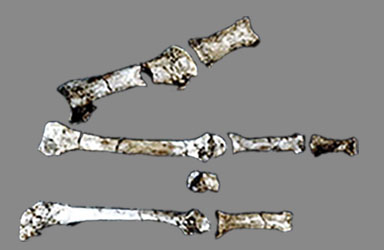Hominin Locomotion
 The sequence of biological events leading to hominin locomotion has long intrigued evolution scientists. Last week, the journal of Nature reported on a hominin-like foot discovered in Eastern Africa. Entitled “A new hominin foot from Ethiopia shows multiple Pliocene bipedal adaptations,” the finding draws into question the evolution of hominin locomotion.
The sequence of biological events leading to hominin locomotion has long intrigued evolution scientists. Last week, the journal of Nature reported on a hominin-like foot discovered in Eastern Africa. Entitled “A new hominin foot from Ethiopia shows multiple Pliocene bipedal adaptations,” the finding draws into question the evolution of hominin locomotion.
Yohannes Haile-Selassie (pictured right below) of the Cleveland Museum of Natural History led the research team in the Woranso-Mille area of the Afar Triangle region of Ethiopia, known as Burtele. In this region, in 1974, Donald Johanson, and his graduate student Tom Gray, discovered Lucy. The fossilized foot bones, however, unexpectedly differ significantly from those of Lucy, also known as Australopithecus afarensis.
“Lucy” acquired her name from the song “Lucy in the Sky with Diamonds” by the Beatles – both becoming big hits. The research team expected to unearth fossils similar to Lucy’s. As Haile-Selassie explains –
“Here we show that new pedal elements, dated to about 3.4 million years ago, belong to a species that does not match the contemporaneous Australopithecus afarensis.”

